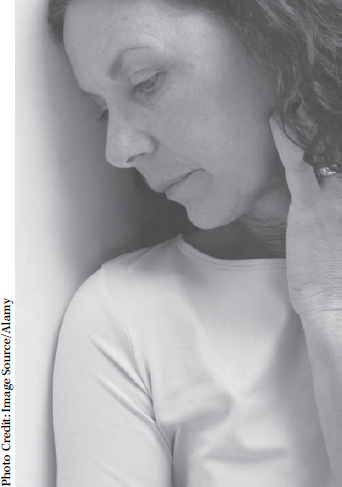13
Mental Disorder and Well-Being in Adulthood
This chapter written with Hannah Oatley
CONTENTS
Psychiatric Disorders: Symptoms and Prevalence
Different Kinds of Depression and Anxiety
Relation Between Emotions and Emotional Disorders
Recurrence, Recovery, and Prolongation of Disorders
Cognitive Biases in Anxiety and Other Emotional Disorders
Schizophrenia and Expressed Emotion

FIGURE 13.0 A striking result in psychiatric epidemiology is that the prevalence of depression is 50% higher in women than in men.
… human misery has awakened, stood before you, and today demands its proper place.
Jean Jaurès (1897) cited by Kleinman (1988, p. 53)
Into the lives of many people come periods of extreme negative emotion, such as hopeless depression or paralyzing anxiety. When such states reach levels at which a person can no longer function in ordinary life, they are referred to as emotional disorders. For an approach to the whole field of abnormal psychology you might turn ...
Get Understanding Emotions, 3rd Edition now with the O’Reilly learning platform.
O’Reilly members experience books, live events, courses curated by job role, and more from O’Reilly and nearly 200 top publishers.

